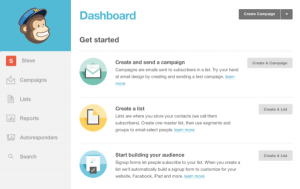The ultimate goal for an eCommerce site is to make sure shoppers can complete a purchase as quickly and smoothly as possible. Nothing should interfere with the online checkout process. However, when marketing is constantly adding new vendor technologies such as social media sharing tools, recommendation engines, and site analytics, these technologies add tags to your website that can hinder performance, ruin UX, leak important user data to competitors – which can result in a terrible user experience.
User Experience and Revenue: More Tied Than You Think
We’ve all encountered products that seem impossible to use; the opposite of well designed. Think Ford Edsel, Microsoft Vista, LaserDisc or economy airline seats. Usability is tied to every aspect of a product, and when it comes to your website, good design couldn’t be more important.
But why? If a product works, shouldn’t that be enough? If you have the lowest prices, shouldn’t that be enough to make your site sticky?
For most of us the answer is no. And how do we know? Because revenues are inextricably tied to user experience. Forrester Research has shown that the top ten companies leading in customer experience tripled the performance of their peers on the S&P 500. Further, they’ve shown that every $ 1 invested in user experience has an ROI of $ 100. Not too shabby.
So what does this mean for retailers in eCommerce? It means that nothing should ever interfere with checkout.
Here are examples of things that can get between a customer and their cart:
- Slow load times (latency): The total time it takes for a page to load, including calls to marketing tags.
40% of people abandon a website that takes more than 3 seconds to load.
- Data leakage: When another brand, agency, or ad tech company collects data about a website’s audience and subsequently uses that data without the initial publisher’s permission.
60-80% of 3rd-party marketing technology vendors are added to a site indirectly, i.e., not authorized by the site owner.
- Mixed content warnings: Security warning shown when a page is displaying secure (https) and non-secure (http) scripts.
57% of customers leave a site when they encounter a mixed content warning.
The Slow Decline of User Experience
So how do these problems occur? It all comes down to sales and the vast majority of internet retailers throw money at building a marketing tech stack that is designed to gather valuable data on users, test different messages, and eventually convert those users.
In the past ten years there has been an intense proliferation of marketing technologies – including the rise of interest-based advertising, which employs tracking tags to build a profile of a user as they explore the internet. Those shoes you checked the price on? Tracking tags are the reason that ads for those shoes follow you around for weeks.
The tools that online marketers have at their disposal are incredible: social media sharing tools, recommendation engines, site analytics to track their success, and of course tag redirects (or piggybacks.) These happen when a tag calls to its network of partners that could include data aggregators, an optimization vendor, and an ad server. These collaborations are powerful, as these partners are able to create a detailed profile of the user. However, each vendor’s marketing tag may partner with many other vendors, each of which will add latency to the page load time.
These technologies are exciting and can provide a great deal of customer insight. But they can also ruin the experience of using your site for the very customers they’re providing insight about.
Walking the Tightrope of Marketing Tech and UX
How does the average eCommerce site harmonize the competing needs of marketing and users? To build a successful experience for customers that enhance satisfaction, a retailer must make complex things easy. The best way to accomplish this is to ensure the experience is smooth and leads a consumer intuitively through checkout.
Here are three solutions to help you integrate these competing and sometimes opposing demands:
- Make your customer the main character.
In a corporate environment we’re confronted daily by our own challenges including how to meet sales goals, how to stay within budget on ad spends, how to increase our reach? But how often do we really put ourselves in the role of the customer?Familiarity may breed contempt, but it also breeds blindness. Often we don’t notice the site that we’ve devoted so much of our time, work, and care has become unruly and unmanageable from the perspective of the user. We see the work we’ve put into it, the problems we’ve solved, the challenges overcome. What we do not notice is the site doesn’t reach its most vital goal: get customers through checkout.It’s time to put yourself back in the shoes of your customer.
- Monitor marketing tags for latency and security risks.
Having real-time visibility into your site’s performance ensures that all tags meet your standards for speed and security. It’s the key to make sure your site loads quickly. A modern eCommerce site needs to use all the tools and technologies at its disposal to analyze and monitor tag performance, precisely zeroing in on a slow tag to remove the problem. Detecting latency issues quickly also allows you to catch issues before the customer experience deteriorates and customers checkout elsewhere.Tag monitoring also reveals unsecured tags that might be causing poor conversion rates and provides protection from data leakage via redirects. Unauthorized tags can leave your data up for grabs.
- Kill your darlings.
In the end, most of these issues are judgment calls. But deciding what marketing technology is serving your needs – versus those of your customers – can be the most difficult compromise you make. Some tags will be redundant. Some will be forgotten. Some will not have clear lines of ownership. But, if you’ve analyzed your tags and found that some impede site performance (which can also hurt your search rank) or leaves you vulnerable to security risks – pull the plug.
Just remember, it’s the customer you’re concerned with. Don’t let your needs blind you to theirs. Improving their experience will lead to increasing your revenues.
Digital & Social Articles on Business 2 Community(98)




